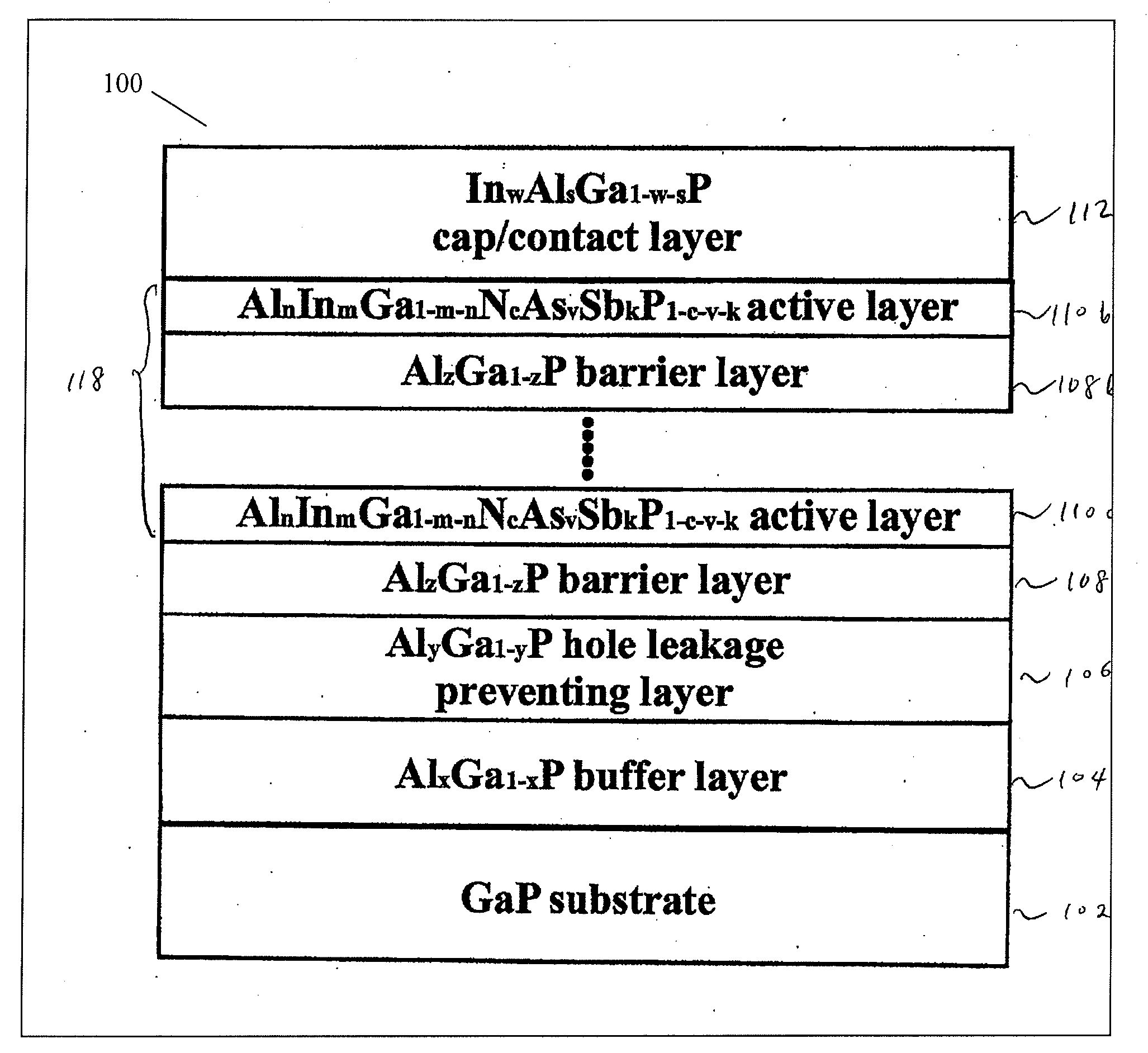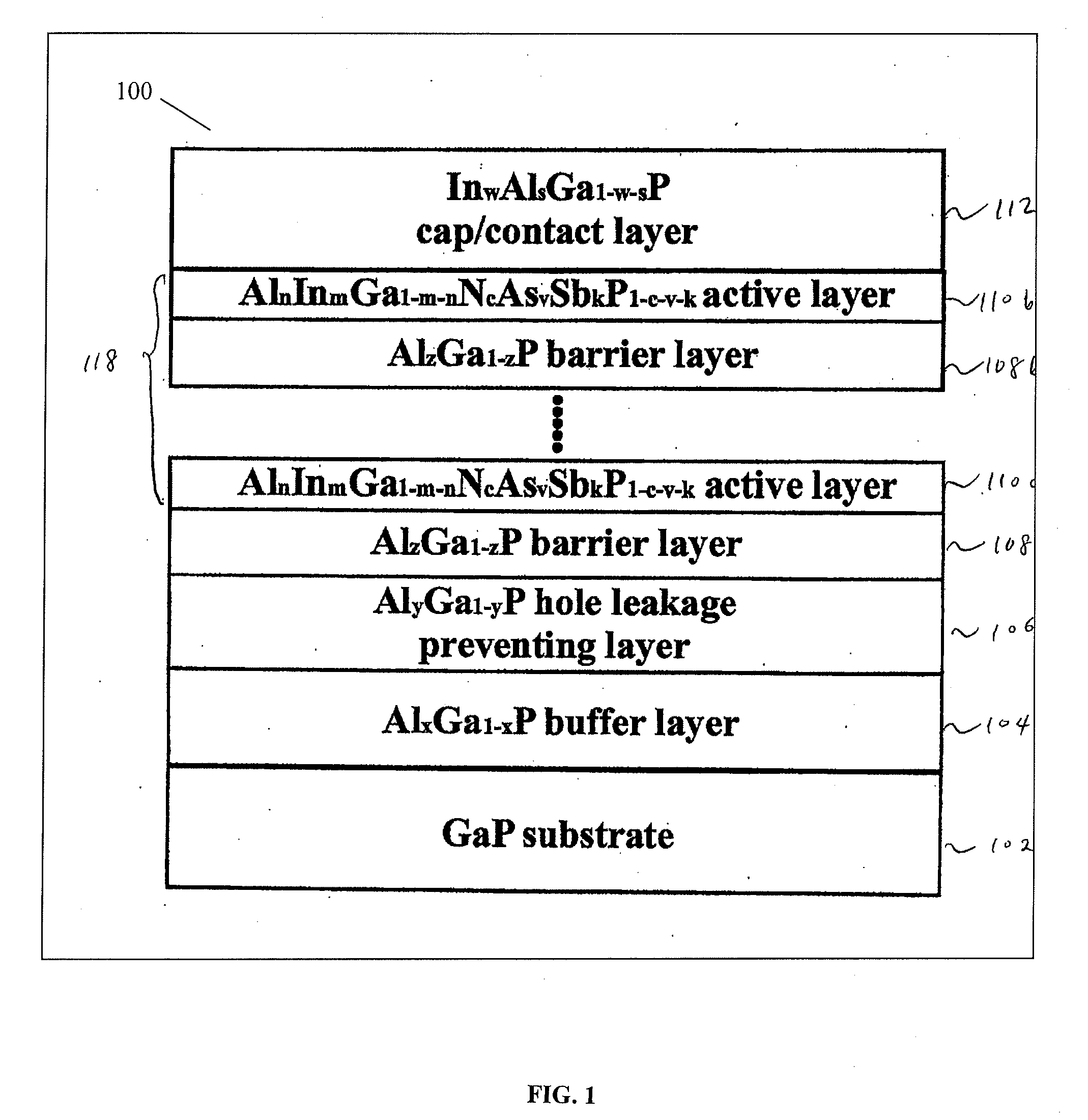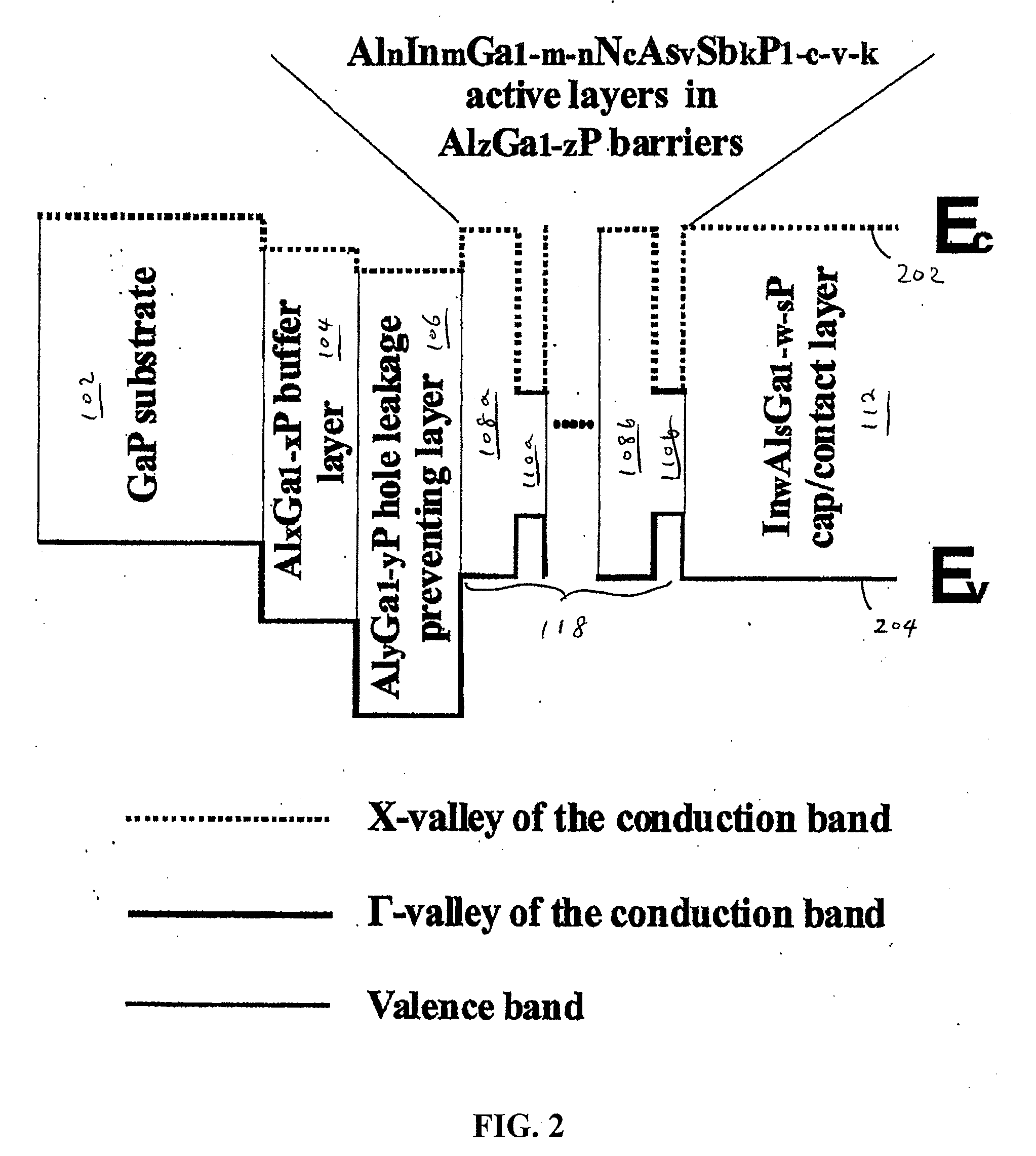High Efficiency Dilute Nitride Light Emitting Diodes
a light-emitting diode, high-efficiency technology, applied in the direction of semiconductor/solid-state device manufacturing, electrical apparatus, semiconductor devices, etc., can solve the problems of low internal quantum efficiency, poor temperature stability, yellow-red alingap-based light-emitting devices, etc., to achieve better temperature stability, reduce the shift of emitted wavelength, and improve luminescence efficiency
- Summary
- Abstract
- Description
- Claims
- Application Information
AI Technical Summary
Benefits of technology
Problems solved by technology
Method used
Image
Examples
Embodiment Construction
[0035]FIG. 1 shows an exemplary LED structure 100 of the present invention. The LED structure comprises a substrate 102, a buffer layer 104, a hole-leakage-prevention layer 106, a plurality of barrier layers 108, a plurality of active layers 110 and a cap / contact layer 112. FIG. 2 shows a schematic of one of the possible band diagrams for the LED structure 100 shown in FIG. 1. Ec is the conduction band minimum, while Ev is the valence band maximum.
[0036]Substrate 102 may comprise GaP or silicon, however this is not a limitation of the present invention and in other embodiments other substrates may be used, such as sapphire, AlN, plastic, quartz, glass, metal, etc.
[0037]Buffer layer 104 may comprise AlxGa1-xP where 0≦x≦1 and be formed over a substrate 102. Buffer layer 104 may be useful to obtain a smooth surface on substrate 102 for subsequent growth of the layers comprising LED structure 100. In some embodiments buffer layer 104 may be undoped or doped n-type or p-type. In some emb...
PUM
 Login to View More
Login to View More Abstract
Description
Claims
Application Information
 Login to View More
Login to View More - R&D
- Intellectual Property
- Life Sciences
- Materials
- Tech Scout
- Unparalleled Data Quality
- Higher Quality Content
- 60% Fewer Hallucinations
Browse by: Latest US Patents, China's latest patents, Technical Efficacy Thesaurus, Application Domain, Technology Topic, Popular Technical Reports.
© 2025 PatSnap. All rights reserved.Legal|Privacy policy|Modern Slavery Act Transparency Statement|Sitemap|About US| Contact US: help@patsnap.com



